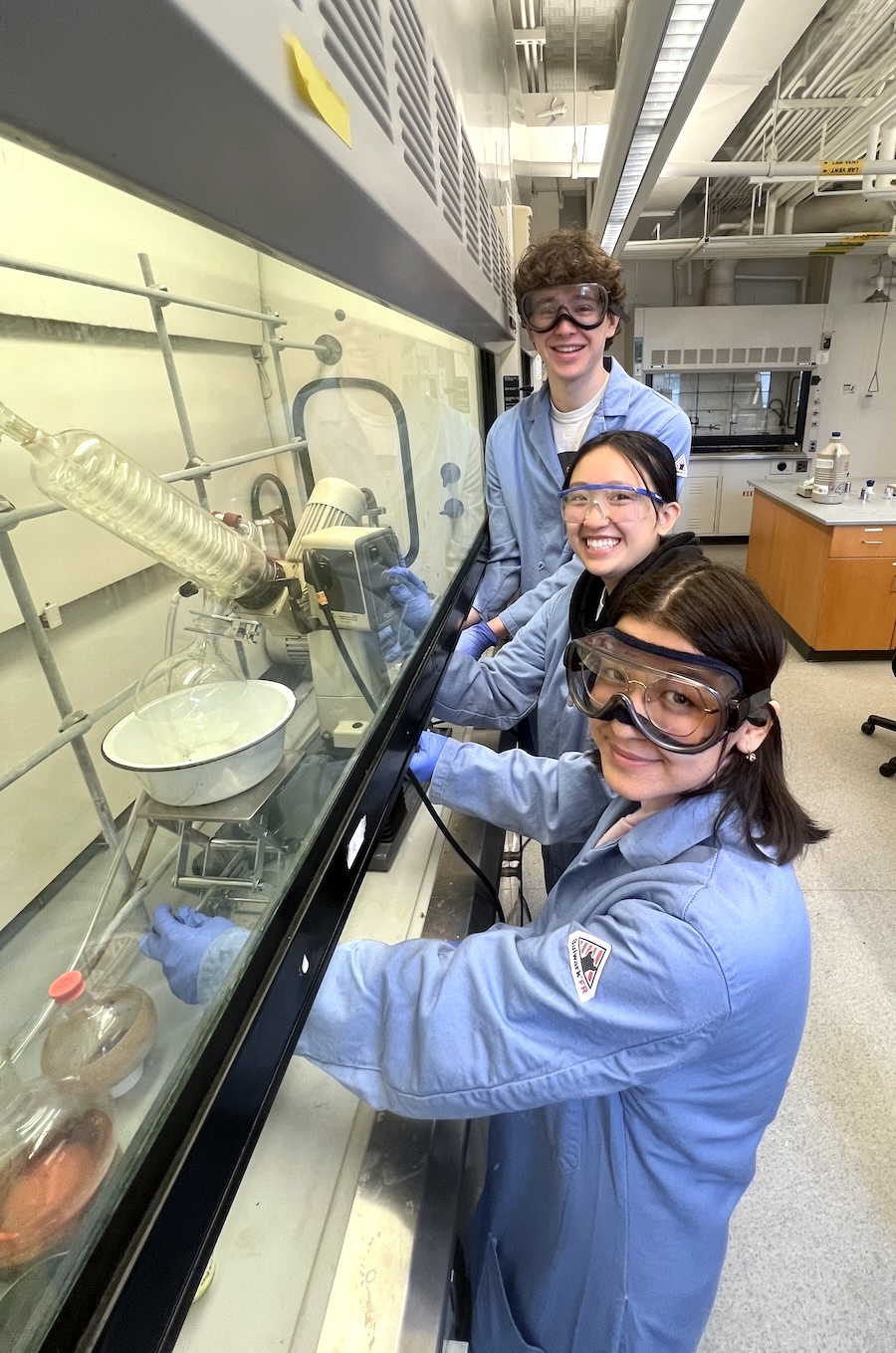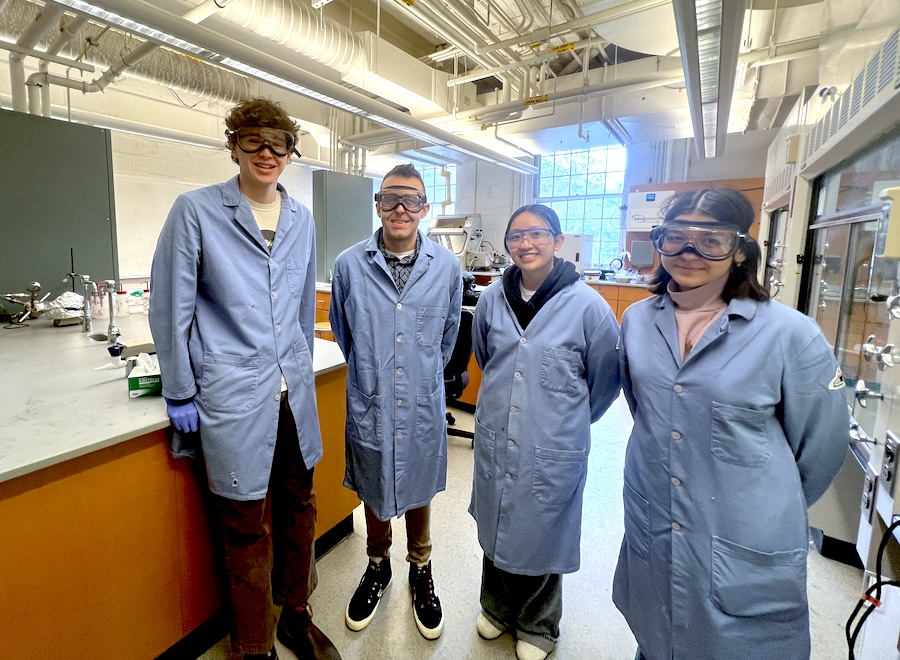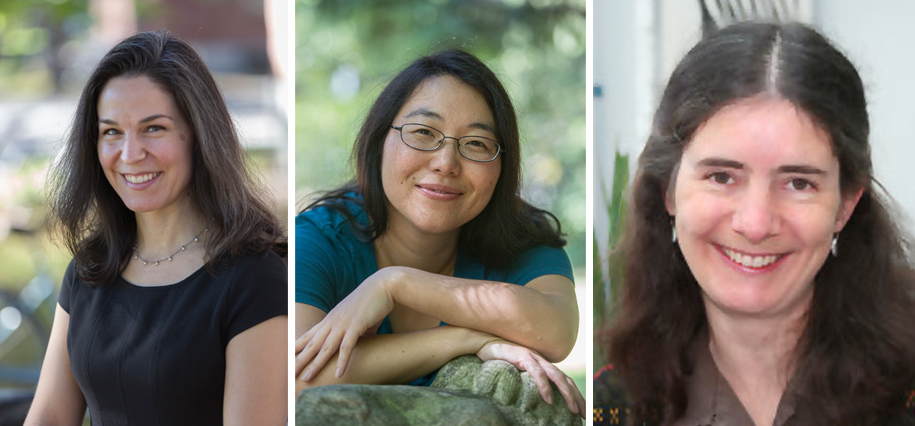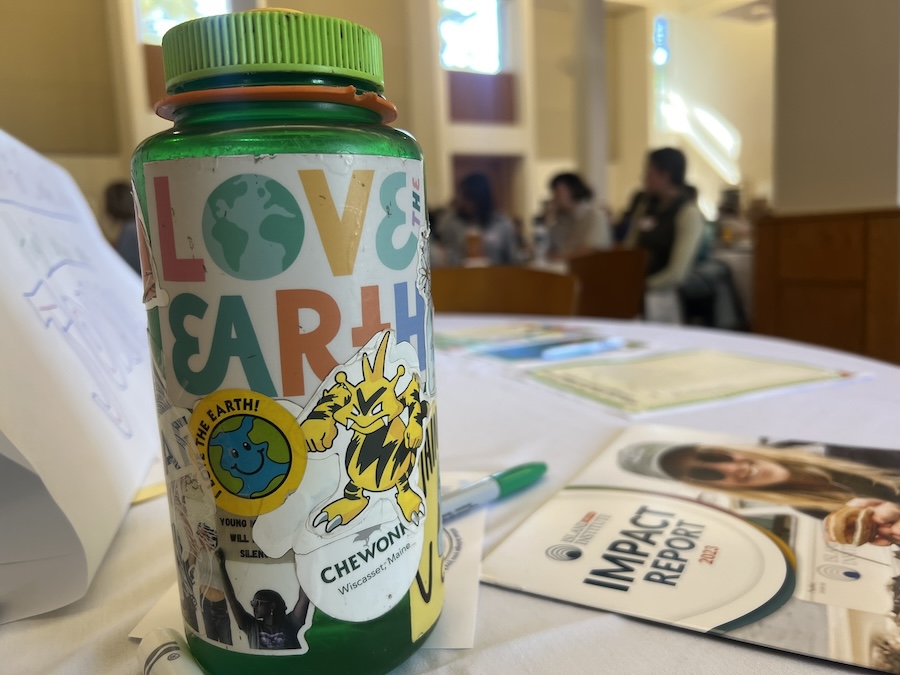Catalyzing a Green Energy Future
By Rebecca Goldfine
Tate, a visiting assistant professor of chemistry and environmental studies, is working on a long-term goal to help introduce a sustainable source of energy that, like oil or gas, can power the needs of long-distance air and vehicle travel.
While lithium batteries are a viable solution for passenger cars and trucks, they have limitations for tractor-trailers driving cross-country or airplanes flying across the globe. "They're not ideal for long-distance trucking, and less so for air travel," Tate said. "If you have a battery that is large enough for a plane, it will be too heavy."
So if scientists can figure out a way to create a renewable fuel, which Tate describes as "a chemical that stores energy," we would have a path forward to a carbon-neutral energy source—one that can be easily stored and replenished.
"Our goal is to generate the same kinds of molecules that you might find in petrochemicals, or fossil fuels, but from renewable resources," he said.
The elements at the base of energy-dense petroleum products are carbon and hydrogen, or hydrocarbon. Hydrogen, rather usefully, is one of two elements that make water, or H2O, along with oxygen. "Many people are focusing on generating hydrogen renewably from water," Tate said.
Yet a challenge surfaces when trying to fuse hydrogen with carbon in a lab. (In nature, biological catalysts, including chlorophyll, were involved in creating the energy stored in fossil fuels, which are the fossilized remains of plants and animals that lived hundreds of millions of years ago.) But when hydrogen is extracted from its cozy partnership with oxygen, it just sits and stares at a carbon atom, Tate said. Like flirty texters on an awkward first date, it needs a jump start, or a catalyst, to entice it to bond.
To this end, Tate and his students are designing novel chemical catalysts, analogous to biological ones, to link carbon dioxide with hydrogen. "There are two main approaches. One is the brute force approach, where you take hundreds of thousands of materials and see if they catalyze this reaction," he said. "I don’t like that approach. You need a large research facility and it can be expensive."
"The approach I enjoy is the rational design of a catalyst," he continued. "We design complex molecules with specific structures in mind."
Climate Change on the Mind
When Tate chose to pursue chemistry, first at Auburn University as an undergraduate and then at Georgia Institute of Technology as a doctoral student, he made a decision to apply his research to solving environmental problems.
"When I thought about many of the major environmental crises and challenges our world is facing, I viewed them as chemical problems," he said. "Climate change is the result of greenhouse gases, which are chemicals, and the result of burning fuels, which is a chemical reaction."

As a chemistry professor in a liberal arts college, he's also well aware that "climate change is an interdisciplinary problem, requiring input from so many different fields."
When he hires students for his lab, he likes to include majors outside of chemistry or biochemistry. In the past two years, for instance, he has worked with a philosophy major and a religion/math major. "I like to have students from other majors with unique perspectives," he said. "It's awesome to see how they work together."
He also urges his students to believe in the importance of their research and the significance of their contributions. "I say the work you are doing is a matter of life and death," he said, because climate change is killing people. "And when it's combined with the research of many people around the world, you are making advancements and addressing an urgent problem."
“I wish we didn’t have to worry about climate change. It would be fun to go into the lab and just make new things. But it adds a bit of a challenge to design our molecules to be useful.”
—Brandon Tate, visiting assistant professor of chemistry and environmental studies
Maryam Akramova ’24, a biochemistry major, has been working in Tate's lab since October 2021. "I feel very connected to this project, and it is super important to me," she said, adding that she will pursue a career in research after graduating. Her time in Tate's lab, she said, "has been a wonderful part of my Bowdoin experience. Here, my input is important; I feel like an integral member of the lab."
Like Akramova, Zach Leibowitz ’24, a biochemistry and psychology major, is continuing a research career after Bowdoin; he has a job at the Dana-Farber Cancer Institute in Boston to study lymphoma and leukemia.
In Tate's lab, he said, "We have a lot of input in terms of the directions our projects go and coming up with our own ideas. It's been a big part of my growth as a scientist."
Rationally Designed Catalysts
The Tate Lab is creating catalysts derived from a combination of acidic metals—such as copper, silver, and gold—and bases like hydroxide and fluoride. Ideally, these metals and bases bond reluctantly, resulting in weak pairs that are easily broken. Tate calls them "acid-base mismatches."
He wants these mismatches to easily break so the positively charged metals and negatively charged bases can get to work splitting the hydrogen molecule into two atoms—one positively charged (a proton) and one negatively charged (a hydride). "Once all the components are put together at a reasonable temperature, our catalyst design relies on the combination of acids as H-negative carriers and bases as H-positive carriers," Tate said.
After the hydrogen has been separated into two energized but lonely atoms, they are available to pair with carbon dioxide, as CO2 is made up of negatively charged oxygen atoms and a positively charged carbon atom.
An important part of the process for Tate and his students is teasing out the mechanisms at play. "We want to determine how this reaction takes place on a molecular level—which chemical bonds are being broken, which ones are being formed, and in what chronological order," he said. "That kind of information can mean a lot to folks who are working in the field of catalyst development. The better we understand it, the better we can make improvements."
With slight variations, this reaction chain can result in several possible hydrocarbon products, from formic acid to methane. "As you use your catalyst to break hydrogen apart and produce protons and hydrides, you can imagine making all sorts of things," Tate said, not just new fuels but also modern chemicals and materials, from plastics to pharmaceuticals.
However, a problem remains: While hydrogen for synthetic fuels can be sourced renewably from water, these fuels still release greenhouse gases into the atmosphere when burned, contributing to climate change. Tate acknowledges that the next step in preventing catastrophic warming would be an effective method of carbon capture.
"In principle, the formation of hydrogen fuel would be paired with the direct air capture of the carbon dioxide released into the atmosphere from human activity," he said, a process known as CCU (carbon capture and utilization). "You use it as a carbon feedstock for renewable fuels. So you could imagine reversing the carbon emissions of the last two hundred years and bringing atmospheric carbon levels down to what they would be naturally."
He's buoyed, too, by the advances he's seeing in the field of carbon capture. "I feel we are making steps forward, we’re getting good at capturing it from power plants. But it is more challenging to pull it out of the atmosphere. Folks are working on that."
Making new catalyst molecules is also difficult and time consuming, but Tate said the work is thrilling for him and his students. "Even though it is a daunting challenge, you’re making brand new molecules no one has ever made before," he said. "That is fulfilling in itself, but if you happen to make a molecule that is useful, a catalyst for fuel production, that is even more exciting."



